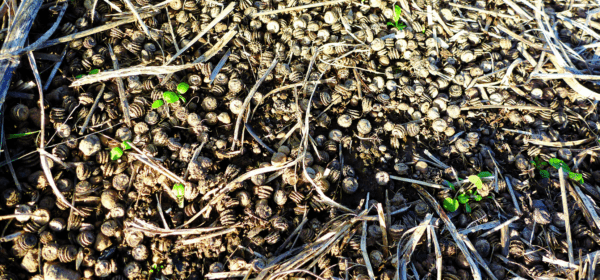High Density Legume (HDL) Blends
July 13, 2021 All Regions
It would have been hard to manufacture a better start to the 2020 growing season than the one we experienced in most of Central Western New South Wales. While the 2020 season was by no stretch free from challenges, it did present ideal conditions for pasture plantings and renovations following on from the shocking years previous. It has been a season where farmers have really noticed the value of hard seeded clovers and medics. Many seasoned growers have been amazed how well some annual legumes have survived the past three years of terrible drought to produce vast amounts of feed when the autumn break arrived in New South Wales.
Some of these successful regenerative legume pastures are the result of growers having previously sown S&W Seed Company High Density Legume (HDL) blend, which are tailored seed blends combining a range of annual legume species with planting at robust sowing rates. HDL mixes are a profitable break crop helping to manage weed and disease pressures while producing ample biomass for productive grazing, silage or hay operations.
Species selection can be adjusted for farmers individual needs, rainfall, soil type and climate. For example, if you were a producer with an average growing season rainfall of 300 millimetres, farming on slightly acidic red country you might look at a combination of SARDI Rose Clover, Dalsa Sub Clover, Cavalier Medic, Bartolo Bladder Clover and Cobra Balansa Clover. In an area of 600 millimetres of rainfall during the growing season on neutral clay, species such as Zulumax Arrowleaf Clover, Clare2 Sub Clover, Hatrik Sub Clover and Border Balansa Clover could be used.
The different mix profiles switch from short season varieties with an emphasis on winter production and reliable seed set in an early finish, to longer season varieties that can produce later through a wet spring and result in an overall greater total biomass potential, but would otherwise not persist in the lower rainfall environment.
HDL mixes are as diverse in their use as they are in their combinations. Species such as Turbo Persian Clover, Border Balansa Clover and Zulumax Arrowleaf Clover can be selected to produce a big, bulky hay or silage cut. Hard seeded species like Silver Snail Medic, Cavalier Medic, Bartolo Bladder Clover and Cobra Balansa Clover can be grazed and allowed to set seed, setting you up for a ley pasture ready to respond to your first rains in autumn.

Image: S&W Cavalier Medic Pods
If you intend to allow a HDL mix to set seed, it is import to select species with a range of season length and varying degrees of hard seededness. This will spread your risk and increase the flexibility and adaptability of your pasture. Short seasoned species will generally respond quickly to early rains, giving you early feed and survive to set seed if you have a hot spring. Conversely, longer seasoned species will capitalise on good growing conditions to extend your feed into summer.
Once established you now have the perfect legume base which you could then sow temperate or subtropical grasses or even lucerne as an oversow to boost pasture production when seasons permit.
In a cropping rotation, HDL blends have a range of agronomic benefits. It will provide an important break in the lifecycle of cereal host specific diseases.
As well as providing the opportunity to control difficult or herbicide resistant grass weeds such as ryegrass, barley grass and silver grass.
Through effective nodulation annual legumes have the potential to supply 25 kilograms of nitrogen to the soil for every tonne of dry matter produced. HDL mixes can comfortably produce 2 tonne per hectare of dry matter in a medium to low rainfall zone. This would equate to 50 kilograms of nitrogen, which is equivalent to roughly 100 kilograms per hectare of urea. Termination of HDL blends at flowering and before seed set will maximise nitrogen benefit to the following crops. Much of the plant’s available nitrogen will be used by the plant to produce seed if allowed.
Early termination will not only maximise successive nitrogen but also allow for the commencement of a fallow for the following winter crop, improving water infiltration and storage, while also maintaining ground cover to protect soil from baking summer sun.
Talk to your local rural store or S&W Seed Company Territory Manager about a tailored HDL blend for your enterprise.
Written by Jack Edwards, S&W Territory Manager for Central NSW